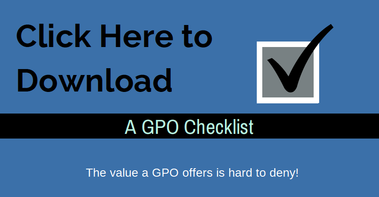Core list and rewrites are a major aspect of sourcing indirect spend. Some would even say that this is the main place to optimize savings year after year. Eager to learn more? Read on to find out everything you need to know about core list development and rewrites.
Benefits
Let's start out with what you are really here for: The Benefits. Why is it important to not only have a proper core list development process, but also have annual rewrites? With a properly developed core list, you can obtain discounts that range between 30%-60% per item. However, the savings don't need to end with your initial discount. Through strict annual reviews and rewrites, you could see year over year savings of 2%-8%.
How it works
When working with your procurement team or an outside sourcing group to develop your core list, you will develop an understanding of your most frequently used items and how they effect your company's cost. Trying to focus on each and every item your company handles will require more time, resources and achieve little incremental return. The goal of developing a core list is to capture as much spend as possible across as few items as possible. That's why creating a core list will enable you to find great savings without putting any extra pressure on your sourcing resources.
Rewrites are the best way to ensure you maintain savings. They are not simply core list reviews, where you are simply repricing items with your supplier. Mainly, rewrites give you the opportunity to analyze those items that should be taken off the list due to low usage and add new items that have demonstrated high usage. The goal of this process is to take the least amount of time to capture the most spend. This is the "churn" that occurs in many indirect items like industrial supplies, computer peripherals and office supplies as new needs drive change and suppliers update their product offering.
How often should you do rewrites?
It's generally advised that you do rewrites annually, whether that be at the end of the calendar year, the end of your company's fiscal year or in line with new catalog issuance and repricing by the suppliers. However, some categories, like MRO, should be looked at semi-annually due to the high rate of turnover in this category. There are times that a supplier's item may become obsolete or, more often than not, different items can change identification numbers or their form of packaging. To ensure the core list is up-to-date, it's best to continue to do rewrites and adjust your core list based on the changes your supplier makes.

At CoVest, rewrites for our members are structured and managed in a unique manner. Our core list is a combination of high volume items across all members and high volume items unique to each member. We make sure to identify key, high volume items that enjoy fixed, aggressive pricing. The list is rewritten often to ensure a tight fit with current spend patterns. CoVest rewrites are different in that, the more members we have, the more spend per item. Our team spends far more time managing the specifics of each category than our members can afford, as the spend levels in these categories are small for each member, but significant for CoVest. Joining a group purchasing organization like CoVest gives an individual company a unique leverage that cannot be found anywhere else.
Photo by Flickr user: MartinAbegglen




